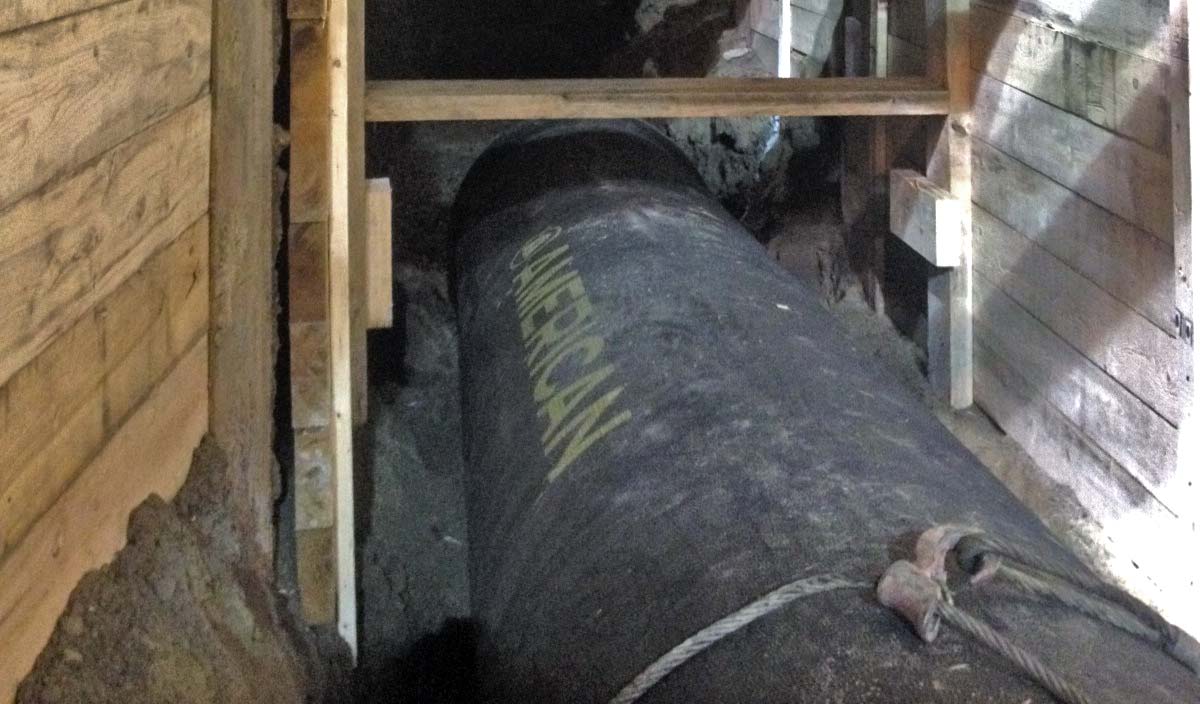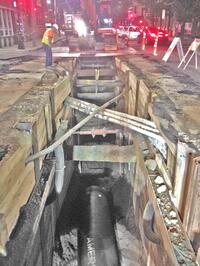Ductile Iron Pipe is the Best Replacement Pipe
- Home
- Team EJP Blog
- Ductile Iron Pipe is the Best Replacement Pipe
- Nov 6, 2014 8:00:00 AM
- Everett J. Prescott

The local media is informed. Emergency text messages are sent. Notices go up at convenience stores and restaurants. No water. Again. For the third time in the past six weeks the community is under a boil order. Why? Because the water pipes were installed when Ulysses Grant was president. And the pipes aren’t rusting, they’re simply disintegrating. Stop and think about that; some of the most important infrastructure any community or city has may have been installed a century and a half ago. Who suffers from the aging infrastructure? Everyone. Schools have to shut down early, businesses suffer, and homeowners not only are inconvenienced, but they may become ill if they don’t get the message and drink the impure water.
When the city maintenance crews dig down and find the leak, it isn’t uncommon to touch old piping and watch it disintegrate right in front of you because the rust that is “holding the pipe” together is so thin. It’s like an eggshell, but not the kind of egg you would want to feed to your family. Finally, after a few years of seemingly constant boil orders; and water that often can’t pass safety tests, the community is ready to spend a little more to ensure that their water, perhaps the most important and basic of all utilities, is finally safe and convenient.
Why Use Ductile Iron Pipe
Now is the time to replace that old, cast iron pipe (or in some cases even older clay pipe) with the new standard and the most reliable water and sewage pipe for municipal and utility pipe; ductile iron pipe. Although cast iron pipe was an incredible technological advancement for moving water and waste, the best guess for life expectancy is 100 years. The variation of cast iron life expectancy can probably best be determined by the number of breaks that must be fixed, the number of boil orders that must be instituted, and the amount of time city utilities must spend on the phone dealing with unhappy customers.
Ductile iron pipe isn’t the new kid on the block. When a municipality decides to use this pipe to replace old and failing water or sewer lines, they won’t be taking a chance on an unproven product that will come back and haunt the city in 10 or 20 years. This kind of pipe has been used for water or sewer conveyance since the 1950’s, and based on studies of this pipe from the 50’s, it is believed that ductile iron pipe will last at least 100 years which is at least as good as cast iron, but with more reliability.
Ductile iron pipe is corrosion resistant and it moves water efficiently and under the high pressures that the pipe in water and sewer systems must face. Ductile iron pipe also has a long life expectancy so a water works manager won’t have to combat problems with leaks, nor will the next several water works managers. Another great benefit of ductile iron pipe is that it can withstand a great deal of ground movement and stresses. When used in normal utility situations for community and city water service, ductile iron pipe is nearly impossible to break, and it is corrosion resistant.
Besides having a long use life, and being corrosion resistant, ductile iron pipe also tightly joints to reduce leaking and pressure problems, and the pipe is easy to machine for convenience when it is drilled, tapped, or cut. A community or city that chooses to replace old, dilapidated water and or sewer pipe with ductile iron pipe will find that this material is just about as close to worry free as possible.
Need more information on how ductile pipe can benefit your project? Read our Benefits of Ductile Iron Pipe blog post and take a look at how ductile iron pipe is made in this video from How It's Made.
Get The Ductile Iron Pipe Guide

The Ductile Iron Pipe Introductory Guide will help you understand all of the details and technical data for ductile iron pipe. Get the guide today, it’s FREE! Here are just a few of the topics covered;
- Cement Lined Pipe
- Pressure Classes
- Nominal Thickness
- Weights for Pipeline Design
- Special Thickness Classes
- Ductile Iron/Gray Iron Weights








